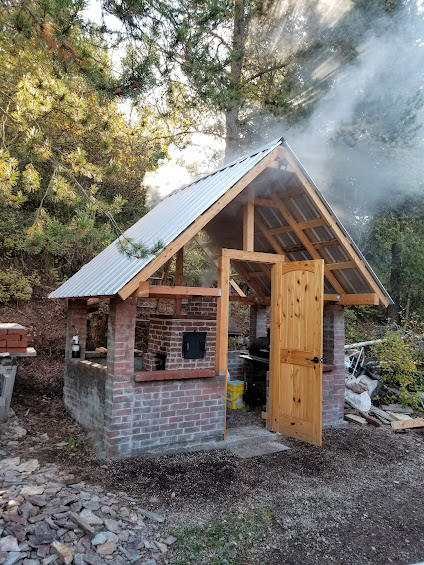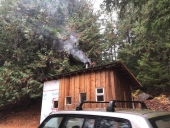
 5
5




 2
2




John Daley Bendigo, Australia The Enemy of progress is the hope of a perfect plan
Benefits of rainfall collection https://permies.com/t/88043/benefits-rainfall-collection
GOOD DEBT/ BAD DEBT https://permies.com/t/179218/mortgages-good-debt-bad-debt
 3
3




 5
5




Eloise Rock wrote:If anyone has a suggestion of a more natural option that can be built quickly and cheaply, and withstands a wet and cold climate well, I'm all ears.
In the past I was sure I would use either Matt Walker's tiny cook stove, or full masonry cook stove depending on the size of the home we built. Now with an even smaller foot print, and higher insulation, I'm wondering if we need to change course...?
1)Should I consider a J-tube instead of the batch style?
2) Should I NOT build a bench, and just do a masonry bell with stovetop, oven, H20 heat exchanger?
3) We have lots of clay in our area, and beach sand. Can a bell be build from cob, or does it need an internal structure of masonry? What about homemade unfired bricks and cob over top? I have never used cob and I'm still trying to wrap my head around what it can and cannot do...
4) There is also a lot of stones at the beach, most of them round and smooth, and some more square. How does stone do for a bell?
Silence is Golden
For all your RMH needs:
dragontechrmh.com
 4
4




Silence is Golden
For all your RMH needs:
dragontechrmh.com

 7
7




For all your Montana Masonry Heater parts (also known as) Rocket Mass heater parts.
Visit me at
dragontechrmh.com Once you go brick you will never go back!
 4
4








 3
3




For all your Montana Masonry Heater parts (also known as) Rocket Mass heater parts.
Visit me at
dragontechrmh.com Once you go brick you will never go back!
 3
3








 3
3




.jpg)

For all your Montana Masonry Heater parts (also known as) Rocket Mass heater parts.
Visit me at
dragontechrmh.com Once you go brick you will never go back!

|
He baked a muffin that stole my car! And this tiny ad:
The new purple deck of permaculture playing cards
https://www.kickstarter.com/projects/paulwheaton/garden-cards
|




